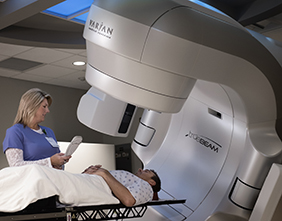Transcatheter Aortic Valve Replacement (TAVR) Procedure
What is a TAVR?
TAVR is a less invasive procedure that is designed to replace a diseased aortic valve and get you back on your feet faster. Any severe aortic stenosis patients who are experiencing symptoms should be considered for TAVR. Only a trained Structural Heart Team can tell you if it is right for you. The procedure is also an option for people at high risk for surgery who had their aortic valve replaced in the past, but need a new one because the replacement may no longer work well.
TAVR can be done in multiple ways, but the most common approach involves making a small incision in your leg (transfemoral approach). Other approaches may be considered for you by the TAVR Team after a thorough evaluation and testing. At Lima Memorial, our Structural Heart Team will work with you to determine the best approach for replacing your valve.
After Your TAVR Procedure
Every individual is unique in their recovery from the procedure. Some patients feel immediate relief from their symptoms soon after their TAVR procedure. For others, it may take a bit longer to get back to normal. Both scenarios are common and normal. Research shows patients who undergo TAVR have reduction in symptoms, improvement in ability to take care of themselves, improved heart function and improvement in overall quality of life within 30 days following the procedure.
What is Aortic Stenosis
The job of your heart is to supply oxygen-rich blood to the rest of your body. Your heart does this by pumping blood through its four chambers with the help of four heart valves that open and close with every beat. One of those valves, the aortic valve, allows the passage of blood from the heart to the body. A healthy aortic valve has three thin leaflets that open and close properly.
Severe Aortic Stenosis (AS)
In a “stenotic” or diseased aortic valve, those leaflets become stiff and thickened which prevent them from opening and closing correctly. This limits the amount of blood pumped out to the body and makes your heart work harder. A diseased valve affects your health and can limit your daily activities.
Causes of Severe Aortic Stenosis
- Calcium build-up
- Birth defect
- Rheumatic fever
- Radiation therapy
Symptoms of Severe Aortic Stenosis
- Chest pain
- Dizziness
- Fatigue
- Shortness of breath
- Irregular heartbeat
TAVR Team
The goal of Lima Memorial’s TAVR program is to improve your quality of life. We provide a team-based approach to prepare a personalized treatment plan for you.


To request a consultation, or for more information or questions about our TAVR program, please call our Structural Heart Coordinator, Natalie Lammers, PA-C, at 419-998-4404.
Medical Services




